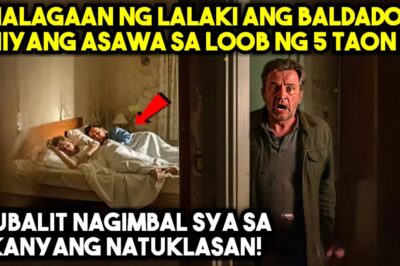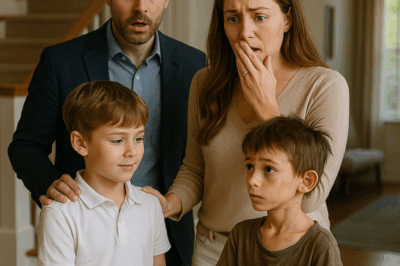 In an old room in Wellington with a view of the sea lives Virginia Beliosco, a 42-year-old caregiver from Olongapo City. She has been in New Zealand for seven years but has long worked in the caregiving profession. Her mornings begin with a walk to the room of the elderly couple she takes care of—an elderly Kiwi couple who barely speak anymore.
In an old room in Wellington with a view of the sea lives Virginia Beliosco, a 42-year-old caregiver from Olongapo City. She has been in New Zealand for seven years but has long worked in the caregiving profession. Her mornings begin with a walk to the room of the elderly couple she takes care of—an elderly Kiwi couple who barely speak anymore.
At night, she returns to a small apartment she shares with her son, Noel. Noel is seven years old—quiet, too, and one of the things he enjoys most is drawing. He had only been in the country for two years and had recently transferred to a school in the city.
At first, Noel showed how excited he was about his new school. But after a few weeks, his energy faded. He stopped telling stories to his mother about his new experiences. He no longer drew like he used to. His notebooks seemed unused, and his eyes showed a sadness and weariness that Virginia couldn’t understand.
Worried, Virginia tried to speak to her son sincerely, but Noel didn’t open up. He simply said he was okay and that he was just adjusting to the new school environment. Virginia believed her son and hoped that, with time, Noel would adapt and things would return to normal.
But before a month had passed, the nightmare every mother fears came true.
One late afternoon in March 2019, she received a phone call while changing the bed linens of the elderly couple she cared for. Upon hearing the devastating news, her body froze and turned cold.
Noel had been rushed to the hospital after being found sprawled on the ground in front of an abandoned building behind the school. According to reports, the boy had fallen from the rooftop and was declared dead before he arrived at the hospital. Worse, there were no CCTV cameras. No witnesses. Authorities claimed it was likely an act of self-harm.
But Virginia had no time to listen to these explanations. There was only one thing she wanted—to see her child.
At the morgue, Virginia nearly fainted. Her one and only child—the reason behind all her hard work—was gone. In a blink, his life was taken, and the circumstances remained unclear.
The following day, she was handed her son’s few belongings: a backpack, a sketchpad with a few drawings, and a cracked cellphone that had fallen with him that day.
For a month after the burial, Virginia’s life lost all meaning. She lost interest in her job, but she had to keep going. Day and night, her thoughts were filled with Noel.
Meanwhile, the school released a statement about the incident. They closed the case as a mental health crisis. The administration issued a message offering support to students in need and included an article about Noel in the school newsletter.
Despite everything, Virginia couldn’t accept how quickly her son was taken from her. Something in her motherly instinct told her there was another version of the truth—one she needed to uncover.
In June 2019, months into her grieving, Virginia tried to visit Noel’s school to ask questions and possibly find the answers that would give her peace.
She spoke with a few people. Some were evasive. But one particular comment from a vendor near the school struck her deeply. The woman claimed to have seen Noel crying behind the lockers just hours before the incident. She also said there were students often mentioned as known bullies, and Noel may have been one of their victims.
Leading the bullying, according to her, was Dominic Grayson, a 16-year-old nephew of one of the school’s administrative staff. Dominic was often seen with three other students: Lars White, Sophie Turner, and Lucas Thompson—children of expats or government employees from Europe and Australia.
They were the type of students who easily got what they wanted and were avoided by others, out of fear of becoming the next target of their bullying.
Virginia never returned to speak with the school administration after learning this. She knew that whatever the staff said might already be filtered—and she would never learn the full truth.
Instead, she began to observe. Every afternoon, as students passed by the small bakery near her workplace, she watched how each of them walked. She memorized which one always carried a skateboard, who always looked down, how they laughed, and how they moved as if they feared nothing.
Several days passed before Virginia finally made up her mind. Perhaps these kids were hiding something, and the school was covering for them because of their families’ backgrounds. Virginia tried to gather evidence that would link the students to what happened to her son. She started by retrieving Noel’s belongings, including his cellphone, which, though cracked, was still working.
With the help of a technician, she was able to unlock and access its contents. She first browsed through the gallery, but found only the usual photos a 16-year-old boy might take. Then she opened the inbox. There were messages from unsaved numbers.
One of these numbers repeatedly sent malicious messages—full of insults, degrading words that could tear anyone’s self-worth apart. The sender mocked his appearance, his ethnicity, and his status in life as someone poor. To trace the owner of the number, she bought a new prepaid SIM card.
While continuing to monitor the group, she tried calling the number one afternoon while they were at a park. As the call rang, she saw Dominick take his phone from his pocket and look at it, but he didn’t answer. At that moment, Virginia confirmed that the one sending the hateful messages to her son’s phone was none other than Dominick.
Now that things were gaining direction, Virginia thought of how to uncover the group’s connection to what happened to her son. Her first move was to send an anonymous message to Dominick’s number. She tried to scare the boy, saying she knew the group’s secret and that they would soon pay for their sins.
Dominic didn’t reply, but Virginia knew that, somehow, she had planted fear in the boy’s mind. In the days that followed, Virginia observed from a distance how Dominic seemed anxious. Unlike him, the rest of the group behaved normally—an indication that he hadn’t told them about the message he had received.
Next, Virginia targeted Sophie. She sent an email using a dummy email account. The message included a photo of one of Noel’s drawings: a boy sitting in a corner with his head down, seemingly crying. Attached was the message: “Do you remember me? – Noel.” Sophie read it and replied.
She boldly said she wasn’t afraid of whoever was behind the message. She sent a series of responses, and Virginia could feel that despite Sophie’s display of courage, there was hesitation behind her words. Meanwhile, Virginia left a photo and a message with the word “Murderer” in Lars’s locker, along with a warning that their secret would soon be exposed.
Lars read it and, like Dominic and Sophie, was clearly shaken by the message’s contents. As the weeks passed, rather than fading into the background, the incident at the school seemed to be resurfacing. The group’s usual hangouts became less frequent, and Virginia felt a growing tension. In her mind, she knew she couldn’t stop until those truly responsible for her son’s death were held accountable—if indeed someone was.
During her continued observation, Virginia had nearly memorized each member of the group’s behavior. Dominic, the leader, was always at the front—sharp-tongued and aggressive in demeanor. Sophie was glued to her phone and behaved like a typical teenager who cared only for herself. Lars, the most mischievous, often bullied smaller students, throwing his heavy arm over their shoulders while teasing them.
Lucas, meanwhile, was a thin, quiet boy—the most subdued in the group, clearly just going along with the others. Virginia felt that if there was anyone who might hold the key to the truth, it was Lucas. He was the final piece of the puzzle she had been building.
Using the same anonymous cellphone number, she called Lucas with a voice changer tool. She invited him to meet her alone at a coffee shop in town. She threatened that if he didn’t show up, she would expose to the public what they had done to Noel. Virginia also told him that she had video evidence of the incident and would make sure it was released if he refused to meet.
Lucas, fearful by nature, agreed to meet her on the condition that he wouldn’t be implicated in any punishment related to the incident. Virginia agreed, knowing he was her only chance to uncover the full truth.
September 2019. Lucas met the woman at the coffee shop as they had agreed. At that moment, he had no idea he was sitting in front of Noel’s mother. Virginia introduced herself as someone undercover investigating the case and assured Lucas that nothing bad would happen to him if he told the truth about what happened the day Noel disappeared.
Sitting across from Virginia, Lucas gradually recounted the events that led to Noel’s tragic end. The group had been bullying Noel ever since he transferred to their school. But the last few days were the worst. From the morning of February 21, 2019, Dominic and Lars began teasing and provoking Noel—not just with words, but physically as well.
By dismissal time, they followed and cornered Noel. He ran toward the back of the school, with Dominic and Lars chasing him. Meanwhile, Sophie and Lucas were stationed at another exit to block any escape. Lucas shared that he saw Noel run up to the rooftop of an abandoned building, with Dominic still in pursuit.
After a few moments, Lucas no longer saw the three and only heard a loud thud. The last thing he remembered was seeing Dominick and Lars coming out of the building, drenched in sweat and visibly terrified. Before anyone could ask them anything, they warned the others not to tell anyone what had happened that afternoon.
It was then that Lars realized the sound he had heard from the rooftop was Noel falling. With every word coming out of Lucas’s mouth, Virginia silently clenched her fist. She didn’t interrupt the young man’s narration, even though each truth she heard felt like a dagger piercing her heart.
Her cellphone was simply lying face-down on the table. But behind it, a voice recording app was actively running. After Lucas finished his account, he left. He took a deep breath and thought that would be the last time he would revisit that incident—one he had also been trying hard to forget.
But for Virginia, that moment wasn’t the end. It was only the beginning of her pursuit for justice.
When she got home, she listened to the entire recording again. She stamped it with the date, saved it on a secure drive, and made a backup. A few days later, she approached a lawyer from a migrant rights center—a Kiwi who used to handle workplace abuse cases pro bono.
She brought with her all the evidence: screenshots of messages, Noel’s cellphone, photos of the threats, and Lucas’s full confession. With the help of the lawyer, a case was filed against the four students—Dominic, Grayson, Lars White, Sophie Turner, and Lucas Thompson. However, Lucas was included in the process as a witness and was recommended for exemption from any charges under the witness cooperation clause.
What made things even more complicated was the role of the school. According to the findings of the lawyer and several legal investigators, the group already had prior records of complaints from other parents. There had been several reports of bullying that never reached the disciplinary council. Everything was logged, but no concrete action was taken. In fact, there were email exchanges between the guidance counselor and a vice principal, in which the teacher was advised to avoid escalation so as not to damage the school’s image ahead of the upcoming accreditation.
This is what weighed down the case. The school was sued for neglect and obstruction of justice because one of the administrators had allegedly learned the truth but failed to take action to hold the guilty parties accountable.
December 2019. The school issued an internal memo expressing surprise at the accusations. However, the principal, the vice principal, and the guidance counselor involved in the cover-up were only temporarily suspended for a few weeks. An internal audit of the school’s entire disciplinary process was also launched.
January 2020. It had been almost a year since Noel disappeared. Not a night passed without Virginia thinking of her son’s face—his features, his modest smile. In every corner of the room where she stayed, there still seemed to be traces of her son’s presence, a lingering reminder that nothing was truly over.
In April 2020, the Youth Court of Wellington handed down its decision after a four-month trial. In court, the judge read the verdict for each of the accused youths.
Due to the seriousness of the crime, the group was punished in the same manner as adults. Dominic Grayson and Lars White, for their combined criminal offenses, were transferred to adult criminal court jurisdiction and sentenced to no less than six years in prison.
Sophie Turner was sentenced to two years of detention in a facility for youth offenders in New Zealand. Meanwhile, Lucas Thompson was granted immunity from any charges in exchange for testifying as a witness against his companions.
Several school officials involved—including Dominic’s mother—were charged with criminal negligence causing death under Section 195A of the Criminal Act, obstruction of justice, and suppression of official complaints. Their licenses were revoked, and they were sentenced to a minimum of three years in prison.
In the following months, the school’s entire disciplinary framework underwent an overhaul. The administration pushed the Ministry of Education to finally address and reform internal policies that had long been criticized.
Meanwhile, Virginia slowly returned to work, though it remained difficult. She moved to a new flat in Lower Hutt, farther from the home she once shared with Noel.
As a mother, Virginia still doesn’t know when true peace will come to her heart—or if it ever will. She often finds herself staring at one of Noel’s drawings, where a young boy walks hand in hand with his mother under the sun.
In that drawing, Virginia sees herself—and the hope that one day, she will see and embrace her son Noel once again.
News
“Daddy, that waitress looks just like Mommy!” — The millionaire turned around and froze… His wife had died!/th
“Daddy, that waitress looks just like Mommy!” — The millionaire turned around and froze… His wife had died! It was…
NAGLAGAY NG HIDDEN CAMERA ANG AMA SA KWARTO NG ANAK, NAGIMBAL SIYA SA GALIT SA KANYANG NAKITA!/th
A father installed a hidden camera and discovered why his 11-year-old daughter was always tired. During the winter in Los…
Her father-in-law often secretly watched her, and what happened next was unexpected./th
Her father-in-law often secretly watched her, and what happened next was unexpected. Sarah froze in front of the bathroom door,…
My Son Bought a House for 3 Million Pesos… Then Picked Up His Parents. What Happened Next Left Me Speechless./th
My Son Bought a House for 3 Million Pesos… Then Picked Up His Parents. What Happened Next Left Me Speechless….
The man cared for his paralyzed wife for five years. But one day, he forgot something. When he returned home, he was shocked by what he saw./th
The man cared for his paralyzed wife for five years. But one day, he forgot something. When he returned home,…
NAMUTLA ANG BATANG MAYAMAN NG MAKITA ANG PULUBI NA KAMUKHA NIYA, DI NYA AKALAIN NA MAY KAPATID SIYA!/th
One day, a young millionaire came across a ragged boy on the street. His clothes were torn and filthy, but…
End of content
No more pages to load












